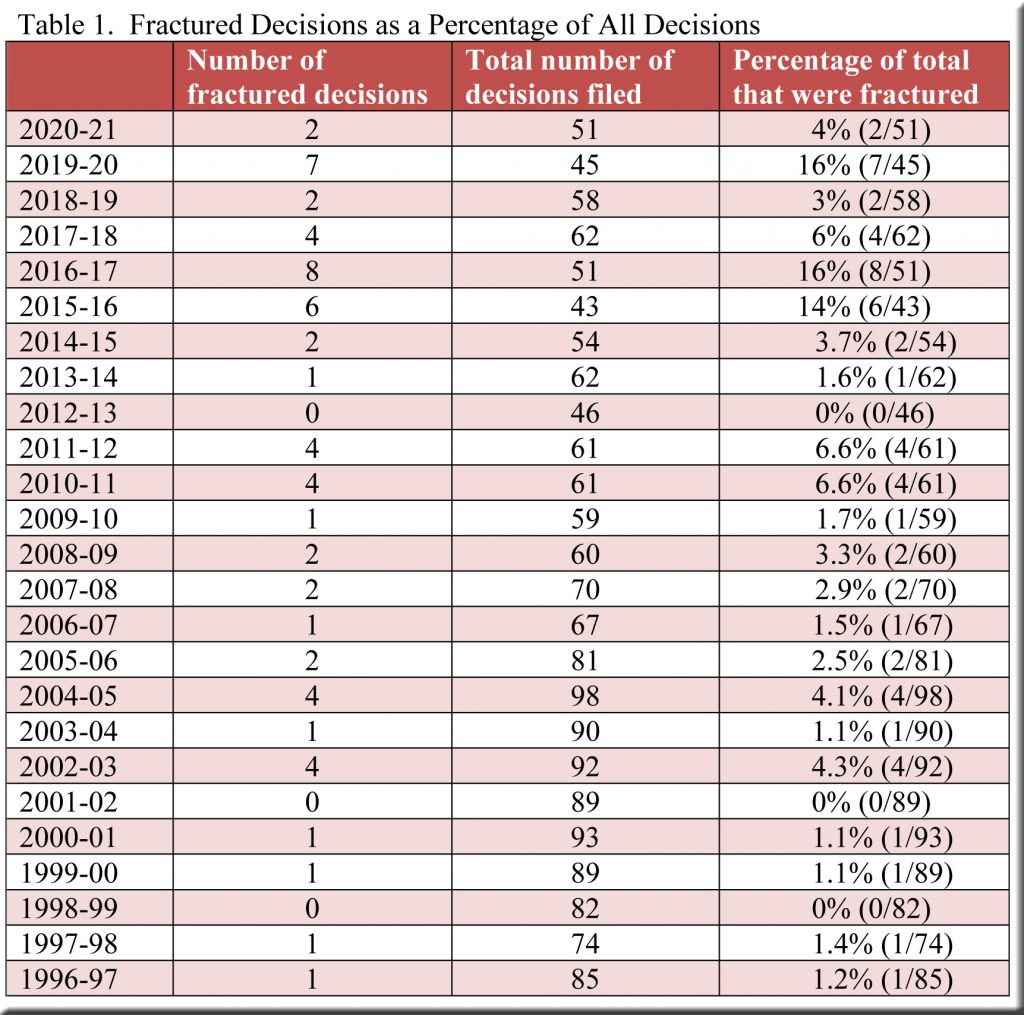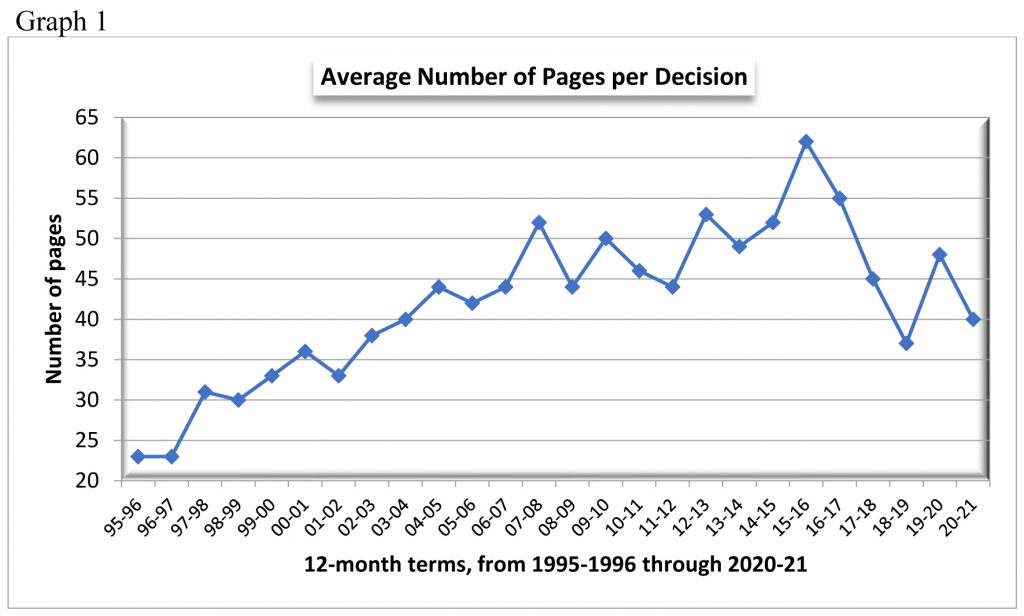In this third post assessing the justices’ activities during the now-completed 2020-21 term, we’ll take a look at four topics that attracted attention last year: (1) fractured decisions; (2) frequency of separate opinions; (3) length of decisions; and (4) the number of days between oral argument and decision filing.
Fractured decisions
A fractured decision is one in which fewer than four justices endorse the reasoning for the court’s ruling. Lacking precedential value and often failing to resolve important questions, such decisions leave lower courts, attorneys, government officials and law enforcement unclear regarding the points of law at issue. Consequently, these parties must have been disappointed to see the percentage of fractured decisions soar in 2019-20—and they were just as likely heartened to watch the figure plunge in 2020-21, as displayed in Table 1.[1]
Frequency of separate opinions
In step with the rise and fall of fractured decisions over the past two terms, the rate of separate opinions (concurrences and dissents) increased dramatically in 2019-20—and then declined in 2020-21 (Table 2).[2] One can hypothesize a fair degree of correlation here, as fractured decisions tend to include more concurrences and dissents, and this is borne out when the last columns of Table 1 and Table 2 are compared.[3] Hence, it is not surprising to find that the drop in fractured decisions this term was accompanied by a smaller number of separate opinions per decision.
Length of decisions
Meanwhile, decisions grew shorter in 2020-21, with the average number of pages shrinking from 48 in 2019-20 to 40 in 2020-21 (Graph 1)—which, indeed, one would expect considering the less frequent appearance of separate opinions in 2020-21.[4] However, these slimmer decisions reflected not only the trimming of concurrences and dissents[5] but also a much greater reduction in the average length of majority opinions, as shown in Table 3.[6]
Time between oral argument and decision filing
Finally, one might anticipate that the number of days between oral argument and the filing of decisions would likewise decrease markedly. Fewer contentious, fractured decisions, along with fewer separate opinions per decision and notably shorter decisions, all suggest such a conclusion. Here, however, little changed, as the average number of days between oral argument and decision filing scarcely budged—inching down from 110 days in 2019-20 to 108 in 2020-21. That said, Graph 2 does make it clear that these numbers from recent years are well below those for nearly every other term of the past two decades, which must be welcome to litigants awaiting the resolution of their disputes.
[1] Deadlocked (3-3) per curiam decisions are not included in these figures. There was only one in 2020-21 (Portage County v. E. R. R.).
[2] A jointly-authored concurrence—by Justices Dallet and Karofsky in Donald J. Trump v. Joseph R. Biden—is counted only once. As detailed in a previous post, three-fourths of the concurrences and dissents in 2020-21 were written by four justices (Roggensack, R.G. Bradley, Dallet, and Hagedorn).
[3] The correlation coefficient for the average number of separate opinions per decision (Table 2) and the percentage of decisions that were fractured (Table 1) is 0.7 for the period 1997-98 through 2020-21.
[4] The averages include title pages—but not the blank page that occurs at the end of each decision.
[5] To be clear, the figures in Table 3 for separate opinions are not the average length of a single concurrence or dissent. They are the average number of pages, per decision, of concurrences and dissents combined.
[6] The figures for majority/lead opinions in Table 3 do not include title pages. Click here for a table showing the average length of majority/lead opinions written by each justice.





Speak Your Mind